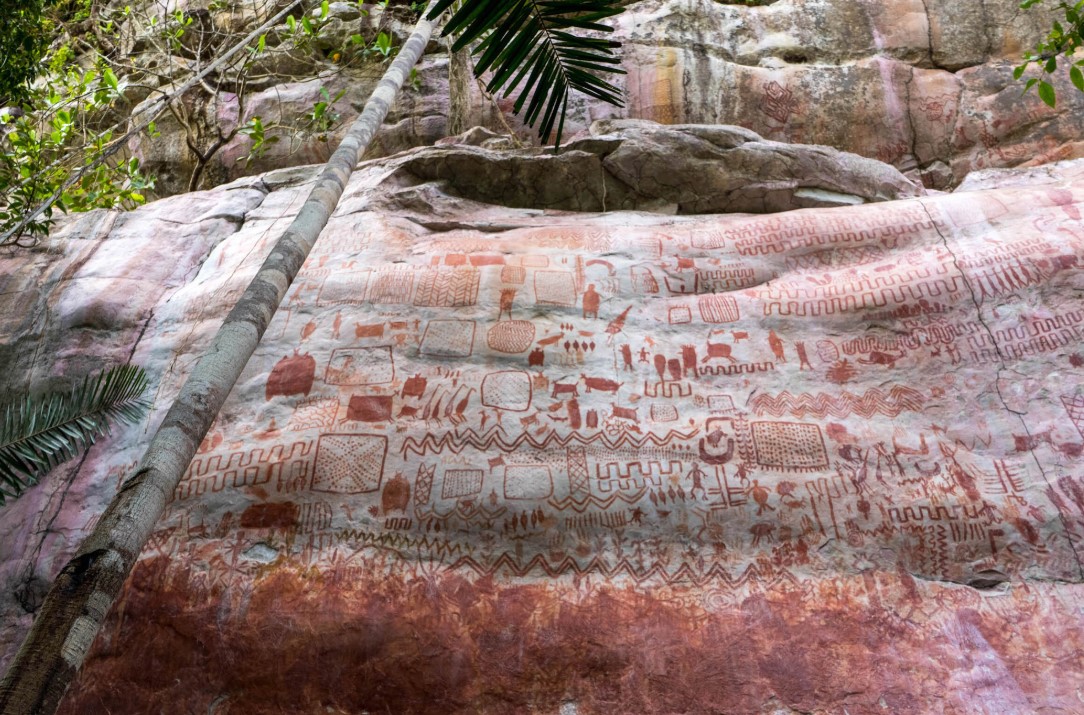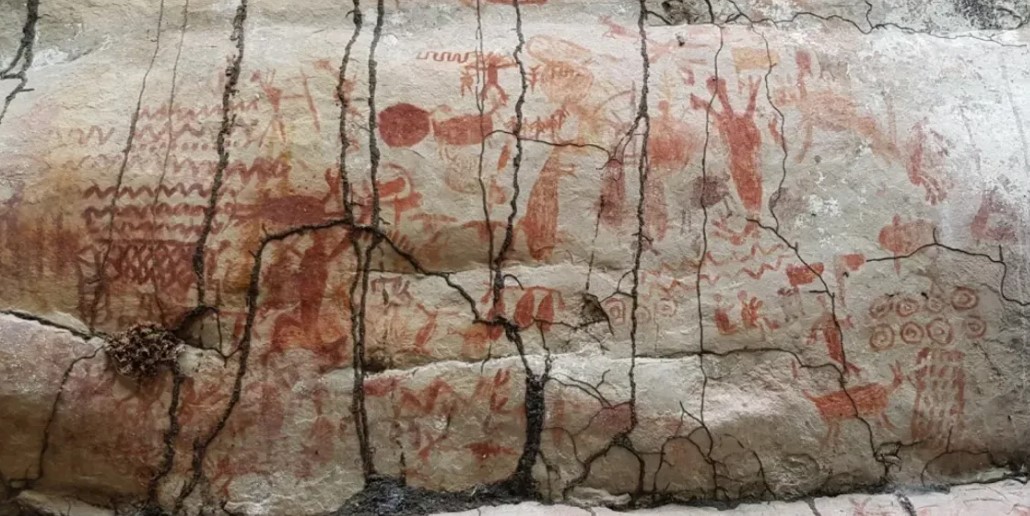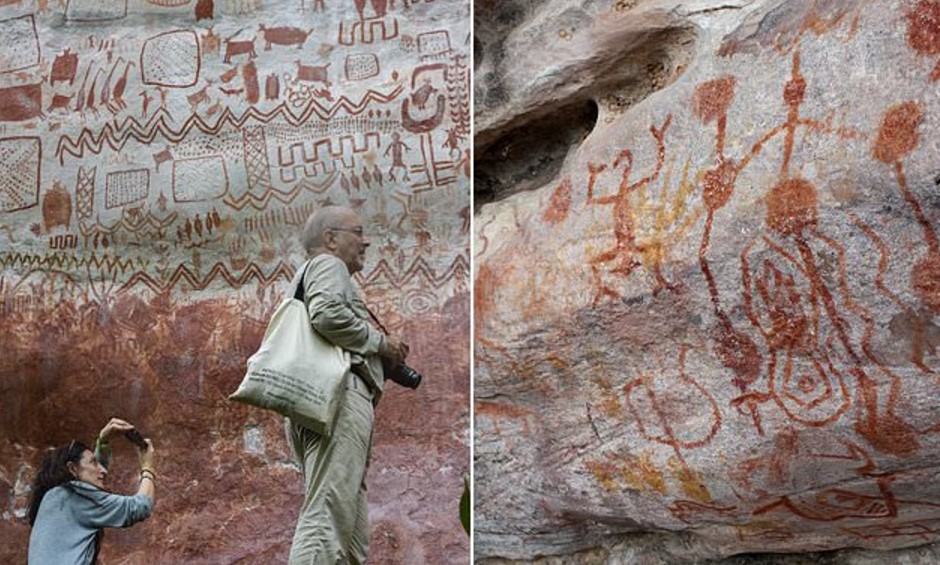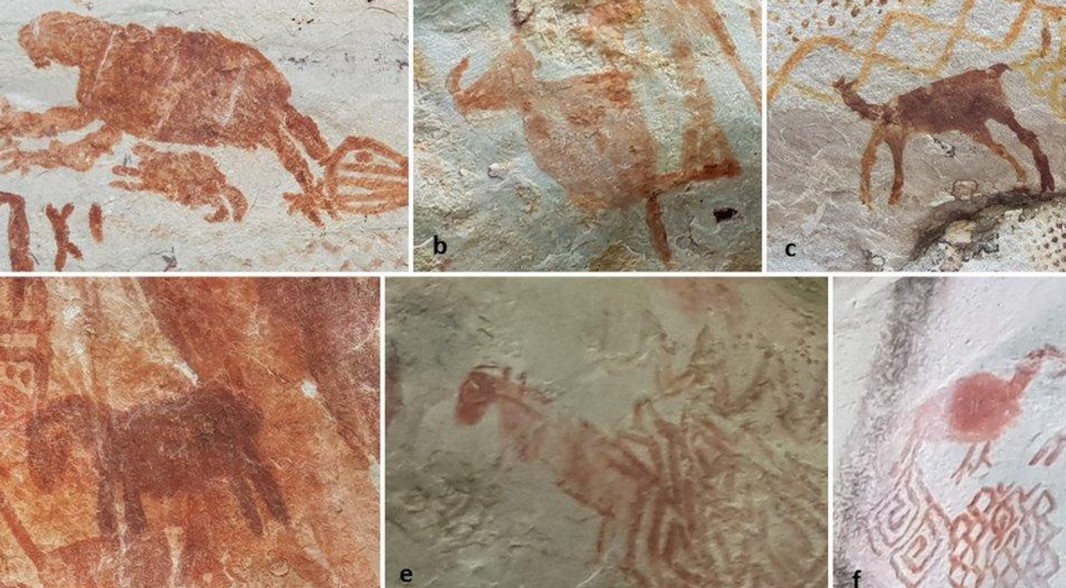Deep in Colombia’s Amazon rainforest lies an extraordinary archaeological treasure, the Lindosas Ancient Art, that has captivated researchers and explorers. Discovered in 2019, this 8-mile stretch of ancient rock art, located in the Serranía de la Lindosa region, features stunning depictions of large ice age animals and everyday life of ancient people. Dubbed the “Sistine Chapel of the Ancients,” the site offers an unparalleled window into a world that existed more than 12,000 years ago. Follow archeology.dulichvn.net to learn more about ancient times
1. The Discovery of La Lindosas Ancient Art
The painted cliffs of La Lindosa were uncovered during an international expedition aimed at exploring the prehistoric Amazon.

1.1. An Archaeological Milestone
This site represents one of the most significant archaeological discoveries of the 21st century. Stretching over 8 miles, the cliffs are adorned with thousands of individual drawings. The artwork is remarkably well preserved, thanks to the natural protection provided by the cliffs and the rainforest canopy.
1.2. Dating Back to the Ice Age
Carbon dating of nearby archaeological evidence suggests the paintings were created approximately 12,500 years ago, during the late Ice Age. This period coincides with the arrival of early humans in the Amazon basin, offering a rare glimpse into the lives of some of the first inhabitants of this region.

1.3. An Art Gallery in the Jungle
The site’s sheer scale and artistic detail are unparalleled. With depictions ranging from human figures to massive creatures like mastodons and giant sloths, the rock art provides a vivid snapshot of a bygone era.
2. The Stories Told by the Rock Art
The paintings at La Lindosa go beyond artistic expression—they offer invaluable insights into the culture, biodiversity, and environment of Ice Age Amazonia.

2.1. Depictions of Extinct Megafauna
Among the most striking images are detailed representations of animals that roamed the region during the Ice Age, such as:
- Mastodons: large, elephant-like creatures that became extinct around 10,000 years ago.
- Giant Sloths: enormous ground-dwelling mammals that could reach heights of up to 13 feet.
- Other creatures include prehistoric horses, camelids, and Saber-toothed cats.
These depictions provide valuable evidence of the biodiversity that existed in the Amazon thousands of years ago.
2.2. Human Figures and Daily Life
The artwork also includes scenes of human activity, showcasing:
- Hunting and Gathering: Images of people interacting with animals, possibly illustrating hunting strategies.
- Rituals and Ceremonies: Some paintings appear to depict spiritual or communal gatherings, hinting at the cultural practices of the time.
- Tools and Agriculture: Representations of early tools and farming techniques suggest the beginnings of agricultural innovation.
2.3. Connections to the Environment
The rock art emphasizes the profound connection between ancient peoples and their natural surroundings. The vibrant depictions of plants, animals, and landscapes reveal a deep understanding and reverence for the environment.
3. The Significance of La Lindo’s Rock Art
This site is more than just an archaeological wonder—it is a critical piece of the puzzle in understanding the history of the Amazon and its ancient inhabitants.

3.1. A Testament to Human Ingenuity
The detailed and sophisticated artwork showcases the creativity and technical skill of Ice Age artists. The use of natural pigments and the ability to scale cliffs to paint intricate designs highlight their resourcefulness.
3.2. Insights into Ice Age Amazonia
The rock art provides a rare glimpse into a period that is often difficult to study due to the lack of preserved organic material in tropical climates. The paintings help researchers reconstruct the environment, climate, and cultural dynamics of the time.
3.3. A Call to Protect Amazonian Heritage
The discovery of La Lindosa underscores the importance of preserving the Amazon rainforest. Beyond its ecological value, the region is a treasure trove of untapped history. Protecting these sites is essential to safeguarding the legacy of ancient civilizations.
4. Visiting the Sistine Chapel of the Ancients
While La Lindosa is not yet a major tourist destination due to its remote location, it holds immense potential for cultural tourism and education.

4.1. Challenges of Accessibility
Reaching the site requires navigating dense jungle terrain, making it accessible mainly to researchers and adventurers. Efforts are underway to develop sustainable tourism options that would allow more people to experience this marvel without harming the environment.
4.2. The Role of Local Communities
Local indigenous communities are key to the preservation and interpretation of the site. Their oral histories and knowledge of the land provide valuable context for understanding the rock art.
4.3. The Future of Research
As researchers continue to explore La Lindosa, new discoveries are likely to emerge. Advances in technology, such as 3D scanning and drone mapping, will enable deeper analysis of the site and its surroundings.
Conclusion
The painted cliffs of La Lindosa stand as a breathtaking testament to the creativity, resilience, and environmental harmony of Ice Age peoples. This “Sistine Chapel of the Ancients” not only enriches our understanding of prehistoric life but also inspires us to protect the Amazon’s cultural and ecological heritage. As we delve deeper into its mysteries, La Lindosa reminds us of the profound connections between humanity, art, and nature that transcend time.

CÁC TIN KHÁC
Mark Twain & Olivia Langdon: A 36-Year Love Story Filled with Laughter and Devotion
The Tollund Man: A 2,400-Year-Old Mystery Preserved in a Danish Bog
Skara Brae: Scotland’s Hidden Neolithic Village
Porta Nigra: The Hidden Depths of Trier’s Iconic Roman Gate